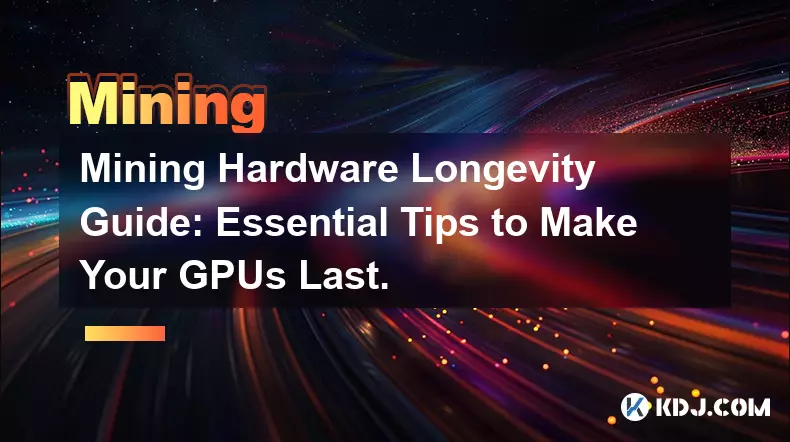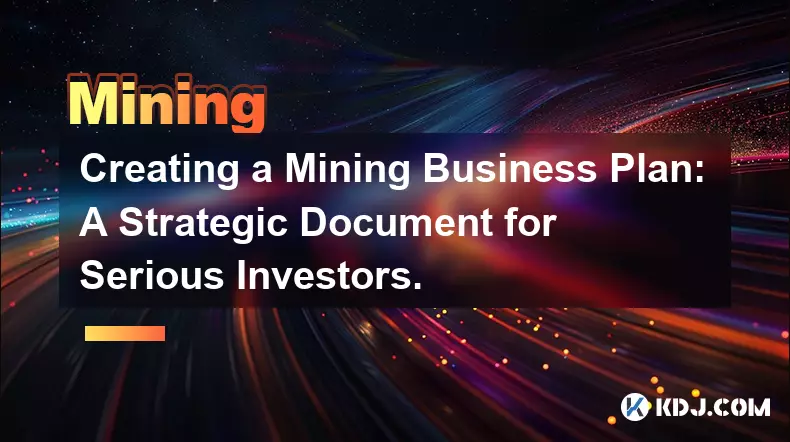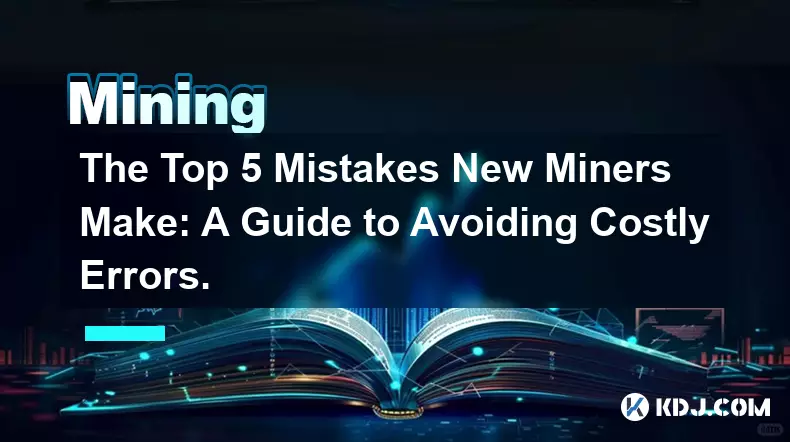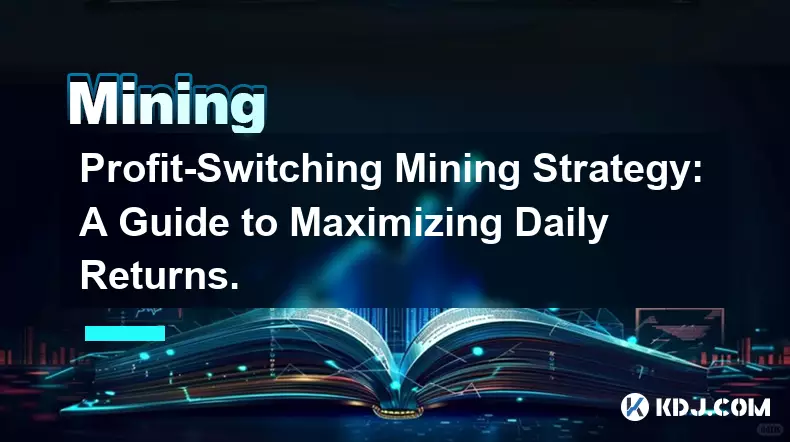-
 bitcoin
bitcoin $107015.826941 USD
-2.18% -
 ethereum
ethereum $3637.352324 USD
-5.18% -
 tether
tether $0.999831 USD
-0.02% -
 xrp
xrp $2.338078 USD
-6.23% -
 bnb
bnb $998.272150 USD
-6.97% -
 solana
solana $167.598257 USD
-10.12% -
 usd-coin
usd-coin $0.999863 USD
0.01% -
 tron
tron $0.282573 USD
-5.09% -
 dogecoin
dogecoin $0.169891 USD
-7.39% -
 cardano
cardano $0.557554 USD
-7.03% -
 hyperliquid
hyperliquid $39.914802 USD
-5.85% -
 chainlink
chainlink $15.414549 USD
-9.97% -
 bitcoin-cash
bitcoin-cash $510.361911 USD
-4.26% -
 ethena-usde
ethena-usde $0.999194 USD
-0.03% -
 stellar
stellar $0.282092 USD
-6.07%
What is the most power-hungry part of a mining setup?
The primary source of energy consumption in crypto mining is the ASIC or GPU, with ASICs drawing significantly more power due to their high-speed hashing capabilities.
Oct 24, 2025 at 09:00 am

Energy Consumption in Cryptocurrency Mining
1. The primary component responsible for high energy usage in a mining setup is the graphics processing unit (GPU) or application-specific integrated circuit (ASIC). These devices are engineered to perform repetitive hashing calculations at extremely high speeds, which demands substantial electrical power. ASICs consume significantly more power than GPUs due to their optimized design for mining efficiency, making them the dominant source of energy draw in modern mining farms.
2. While other components like motherboards, power supply units (PSUs), and cooling systems also use electricity, their consumption pales in comparison to the mining hardware itself. A single high-performance ASIC miner can draw between 3,000 to 3,500 watts under full load, equivalent to multiple household appliances running simultaneously. This level of demand requires robust infrastructure and stable power sources to avoid disruptions.
3. Power supplies play a crucial role in overall efficiency. Even though they are not the most power-hungry part, an inefficient PSU can increase total energy consumption by converting excess AC power into heat rather than usable DC power for the components. Miners often opt for 80 Plus Platinum or Titanium-rated PSUs to minimize waste and improve operational cost-effectiveness.
4. Cooling solutions such as industrial fans or liquid cooling systems contribute to the total power footprint. In large-scale operations located in warm climates, maintaining optimal temperatures becomes critical. Excessive heat reduces mining efficiency and shortens hardware lifespan, prompting operators to invest heavily in ventilation and air conditioning, further increasing electricity demands.
Hardware Efficiency and Power Draw
1. Modern ASIC miners like the Bitmain Antminer S19 series are built specifically for SHA-256 algorithms used in Bitcoin mining. Their architecture allows for terahash-level performance but comes with a steep power requirement—often exceeding 3,000 watts per unit. The hash board inside these units is where the majority of power is consumed, as thousands of microprocessors work in parallel to solve cryptographic puzzles.
2. GPU-based mining rigs, commonly used for Ethereum Classic or Ravencoin, typically consist of six to eight high-end graphics cards such as the NVIDIA RTX 3090 or AMD RX 6800 XT. Each card can draw between 300 to 400 watts, meaning a full rig may operate at 2,000+ watts. Although less powerful than ASICs, GPU setups remain popular among decentralized coin miners due to accessibility and flexibility.
3. Manufacturers continuously push for better watt-per-hash ratios. Improvements in semiconductor technology, such as transitioning from 7nm to 5nm chips, allow for higher computational output with relatively lower power input. However, increased density of transistors also leads to greater thermal output, necessitating advanced thermal management strategies that indirectly affect total energy use.
4. Overclocking practices further amplify power consumption. Enthusiasts often tweak voltage settings and core frequencies to extract maximum performance from their hardware. While this boosts hashrate, it also increases power draw disproportionately, sometimes reducing net profitability despite higher output.
Environmental and Operational Impact
1. Large mining facilities consume megawatts of electricity, comparable to small towns. Locations with cheap hydroelectric, geothermal, or stranded natural gas resources have become hotspots for data centers focused on cryptocurrency mining. Operators seek regions with low kilowatt-hour rates to maintain margins amid rising hardware and energy costs.
2. Some projects repurpose flared natural gas in remote oil fields to power mining containers. These mobile units reduce greenhouse emissions by utilizing otherwise wasted energy. Though controversial, this approach highlights how energy-intensive mining drives innovation in alternative power sourcing.
3. Regulatory scrutiny intensifies in areas where mining strains local grids. New York State imposed a two-year moratorium on new crypto mining powered by fossil fuels, citing environmental concerns. Other jurisdictions require proof of sustainable energy usage before granting permits, reflecting growing pressure to align digital asset production with climate goals.
4. Renewable integration remains limited but growing. Solar-powered mining installations exist, though intermittency issues make consistent operation challenging without battery storage or hybrid systems. Until energy storage solutions become more affordable, reliance on stable grid power persists, reinforcing the dominance of traditional energy sources in the sector.
Frequently Asked Questions
What component generates the most heat in a mining rig?The ASIC hash board or GPU produces the highest amount of heat due to continuous computational workload. Thermal output correlates directly with power consumption, requiring active cooling to prevent throttling or damage.
Can mining be profitable with high electricity costs?Profitability depends on coin value, network difficulty, and equipment efficiency. High electricity prices can erase margins, especially for older or inefficient hardware. Miners in expensive regions often shut down during market downturns.
Do FPGAs use less power than ASICs?Field-programmable gate arrays (FPGAs) offer moderate power efficiency and flexibility but are generally outperformed by ASICs in both speed and watt-per-hash metrics. They are rarely used in large-scale operations today.
How does ambient temperature affect mining power usage?Higher ambient temperatures reduce cooling efficiency, forcing fans to run faster and consume more power. Elevated temps may also cause hardware to throttle, lowering hashrate while maintaining similar energy draw.
Disclaimer:info@kdj.com
The information provided is not trading advice. kdj.com does not assume any responsibility for any investments made based on the information provided in this article. Cryptocurrencies are highly volatile and it is highly recommended that you invest with caution after thorough research!
If you believe that the content used on this website infringes your copyright, please contact us immediately (info@kdj.com) and we will delete it promptly.
- Score Big with BetMGM: NBA, NFL, and the TOP150 Bonus Code
- 2025-11-05 08:50:13
- BullZilla Presale: The Roaring Crypto Opportunity You Can't Ignore
- 2025-11-05 08:55:01
- New Coin Honors Unknown Soldier: A Nation Remembers
- 2025-11-05 08:35:01
- CZ's Aster Token Gamble: Binance Founder's Move and Market Reactions
- 2025-11-05 08:00:02
- DeFi Reimagined: Decentralized Insurance Networks Meet AI
- 2025-11-05 07:05:01
- Bitcoin, Binance, and Investors: Navigating the Crypto Landscape
- 2025-11-05 08:00:02
Related knowledge

Mining Hardware Longevity Guide: Essential Tips to Make Your GPUs Last.
Nov 01,2025 at 04:00pm
Mining Hardware Longevity Guide: Essential Tips to Make Your GPUs LastAs cryptocurrency mining continues to attract both hobbyists and professionals, ...

Creating a Mining Business Plan: A Strategic Document for Serious Investors.
Nov 04,2025 at 08:54pm
Defining the Core Objectives of a Cryptocurrency Mining Venture1. Establishing a clear mission for the mining operation ensures alignment with investo...

The Top 5 Mistakes New Miners Make: A Guide to Avoiding Costly Errors.
Nov 01,2025 at 10:18am
The Top 5 Mistakes New Miners Make: A Guide to Avoiding Costly Errors Entering the world of cryptocurrency mining can be both exciting and overwhelmin...

The Miner's Guide to Market Cycles: When to Hold and When to Sell.
Nov 03,2025 at 07:55pm
The Miner's Guide to Market Cycles: When to Hold and When to Sell Bitcoin mining has evolved from a hobbyist pursuit into a highly competitive, capita...

Profit-Switching Mining Strategy: A Guide to Maximizing Daily Returns.
Nov 03,2025 at 11:55am
Understanding Profit-Switching in Cryptocurrency Mining1. Profit-switching is a dynamic mining strategy that automatically redirects computational pow...

Setting Up Mining Alerts: A Guide to Monitoring Your Rigs 24/7.
Nov 03,2025 at 02:54pm
Why Continuous Monitoring Is Crucial in Cryptocurrency Mining1. Cryptocurrency mining operations rely heavily on hardware stability and network connec...

Mining Hardware Longevity Guide: Essential Tips to Make Your GPUs Last.
Nov 01,2025 at 04:00pm
Mining Hardware Longevity Guide: Essential Tips to Make Your GPUs LastAs cryptocurrency mining continues to attract both hobbyists and professionals, ...

Creating a Mining Business Plan: A Strategic Document for Serious Investors.
Nov 04,2025 at 08:54pm
Defining the Core Objectives of a Cryptocurrency Mining Venture1. Establishing a clear mission for the mining operation ensures alignment with investo...

The Top 5 Mistakes New Miners Make: A Guide to Avoiding Costly Errors.
Nov 01,2025 at 10:18am
The Top 5 Mistakes New Miners Make: A Guide to Avoiding Costly Errors Entering the world of cryptocurrency mining can be both exciting and overwhelmin...

The Miner's Guide to Market Cycles: When to Hold and When to Sell.
Nov 03,2025 at 07:55pm
The Miner's Guide to Market Cycles: When to Hold and When to Sell Bitcoin mining has evolved from a hobbyist pursuit into a highly competitive, capita...

Profit-Switching Mining Strategy: A Guide to Maximizing Daily Returns.
Nov 03,2025 at 11:55am
Understanding Profit-Switching in Cryptocurrency Mining1. Profit-switching is a dynamic mining strategy that automatically redirects computational pow...

Setting Up Mining Alerts: A Guide to Monitoring Your Rigs 24/7.
Nov 03,2025 at 02:54pm
Why Continuous Monitoring Is Crucial in Cryptocurrency Mining1. Cryptocurrency mining operations rely heavily on hardware stability and network connec...
See all articles










































































